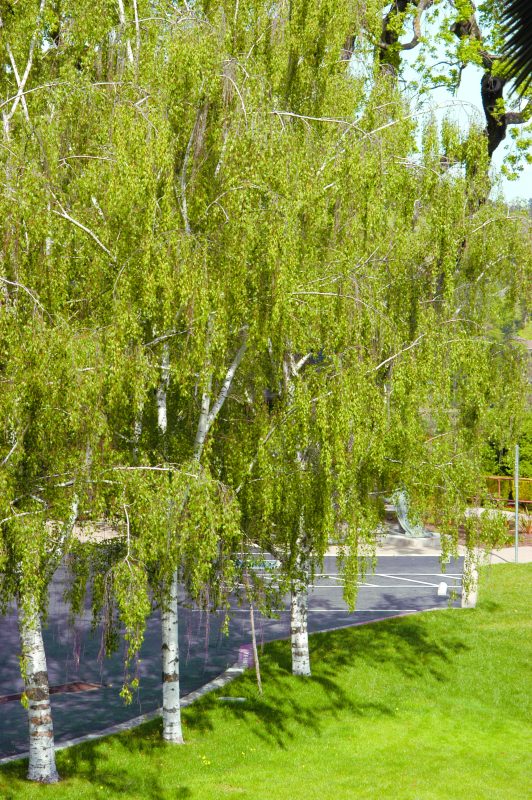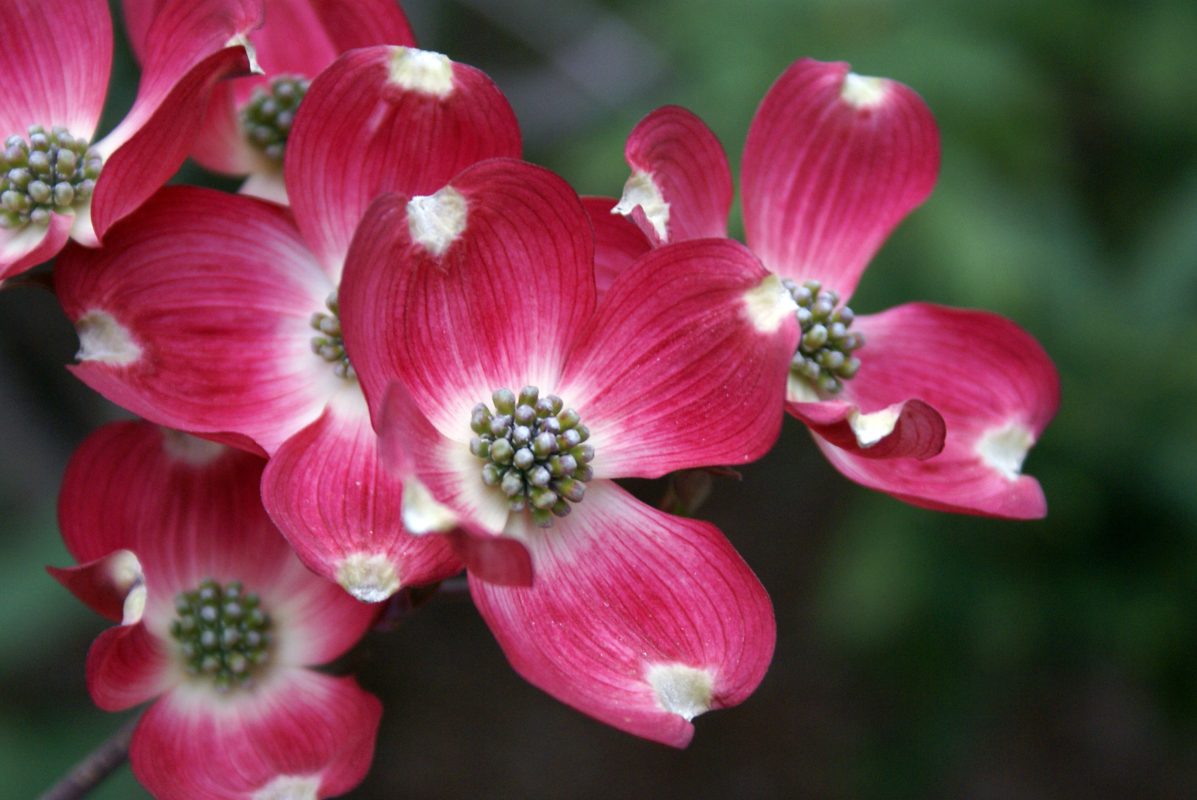Trees add value to any landscape.
It is easy to see why trees herald the first signs of spring. From the first crack of colorful buds on flowering cherries to the late fall foliage show New England is know for, trees mark our seasons. At Lakeview, we know that trees aren’t just part of the landscape, they are part of our lives. Trees get planted at new homes, in celebration of a new baby or in honor of a lost loved one. Every tree is as unique as the family who plants it. Our team in the nursery yard is here to make finding your perfect tree easy!
A Chinese Proverb once said; “The best time to plant a tree is 20 years ago. The second best time is now.” Whether you are tired of looking at your neighbors, want some shade or need a tree that works for a small yard, we can help you pick out trees you will love.
GUARANTEE POLICY
All Shrubs & Trees are guaranteed for 1 year from the date of purchase. We will refund your purchase price as store credit for use anytime. All claims must have plant TAGS, the RECEIPT and the PLANT. There is no guarantee on replacement plants.

Shade Trees
Shade trees are invaluable assets to both urban and suburban landscapes, offering not just relief from the sun’s intensity but also contributing significantly to the ecological balance and aesthetic beauty of their surroundings. These trees provide cool, shaded areas that can significantly reduce temperatures in their immediate vicinity, making outdoor spaces more comfortable during hot weather. Additionally, they help in reducing energy costs by cooling homes and buildings, improve air quality, and support wildlife by offering shelter and food. Proper selection, planting, and care are essential to ensure these trees reach their full potential, providing benefits for generations. Below is a list of some notable shade trees, organized alphabetically, each with a brief description:
- Acer (Maple): Maples are celebrated for their stunning fall coloration, ranging from bright yellows to deep reds. They are versatile trees that can adapt to a wide range of soil types and conditions, making them a popular choice for many landscapes.
- Betula (Birch): Birch trees are known for their distinctive white bark and delicate leaves, offering a striking visual contrast in any garden setting. They prefer cooler climates and moist soil, making them a beautiful addition to northern landscapes.
- Fagus (Beech): Beech trees are majestic with smooth, gray bark and a dense canopy that provides ample shade. Their leaves turn a lovely bronze in the fall, and the tree’s strong structure makes it a long-lasting presence in any landscape.
- Ginkgo: The Ginkgo tree, with its unique fan-shaped leaves, is a living fossil that has remained unchanged for over 200 million years. It is highly resilient to pollution and disease, making it an excellent choice for urban environments. Its leaves turn a vibrant yellow in the fall.
- Oxydendrum (Sourwood): Sourwood is notable for its summer flowers and brilliant fall foliage. It produces drooping clusters of white flowers in the summer, followed by leaves that turn vivid shades of red, orange, and purple in the fall.
- Quercus (Oak): Oaks are powerful symbols of strength and endurance, offering expansive canopies that provide deep shade. They are vital to wildlife, supplying acorns for food and large branches for shelter.
- Salix (Willow): Willows are known for their graceful, drooping branches and love of water. They can grow quickly, providing fast shade and adding a sense of elegance and tranquility to waterside settings.
- Ulmus (Elm): Elms were once a staple of American landscapes until many were lost to Dutch elm disease. Resistant varieties are bringing these majestic trees back to streets and parks, where their large, vase-shaped canopies provide extensive shade and aesthetic appeal.

Flowering Trees
Flowering trees bring a burst of color and fragrance to landscapes, marking the seasons with their beautiful blooms. These trees not only enhance the visual appeal of any garden but also support local wildlife by providing habitat and food sources. Their flowers attract pollinators such as bees, butterflies, and birds, playing a crucial role in the ecosystem. Caring for flowering trees involves ensuring they are planted in the right location with enough sunlight and well-drained soil, regular watering, appropriate fertilization, and pruning to maintain shape and health. Here’s a list of some remarkable flowering trees, organized alphabetically, each with a brief description:
- Amelanchier (Shadblow): Known for its delicate white spring flowers and vibrant fall foliage, the Amelanchier is a hardy tree that also produces edible berries, adding both beauty and function to landscapes.
- Cercis (Redbud): This tree is celebrated for its stunning pink flowers that bloom directly on the branches in early spring, before the leaves emerge, creating a striking display against the backdrop of the changing seasons.
- Cornus (Dogwood): Dogwoods are cherished for their beautiful spring flowers, which come in shades of white, pink, and red. They also feature attractive fall foliage and berries, providing year-round interest.
- Cotinus (Smokebush): With its unique, fluffy flower clusters that resemble smoke and its purple or gold foliage, the Smokebush adds a touch of whimsy and color to any garden space.
- Hamamelis (Witchhazel): Known for its fragrant, spider-like flowers that bloom in late fall to early spring, Witchhazel is a captivating addition that provides color and fragrance during the cooler months.
- Hibiscus (Rose of Sharon): This late-summer bloomer offers large, colorful flowers ranging from white to pink to blue, adding a tropical flair to temperate gardens.
- Hydrangea: With its large, showy blooms that can change color based on soil pH, Hydrangeas are a favorite for adding drama and a splash of color to shaded areas.
- Magnolia: Magnolias are known for their large, fragrant flowers that appear in early spring, often before the leaves, on grand, stately trees that can become the centerpiece of any garden.
- Malus (Crabapple): Crabapples delight with their spring blossoms and small, colorful fruits in the fall, which also provide food for wildlife, making them both beautiful and beneficial.
- Stewartia: Featuring stunning white flowers in the summer, exfoliating bark, and brilliant fall colors, Stewartia trees are a four-season wonder that thrives in partial shade.
- Styrax (Japanese Snowbell): This tree graces gardens with its fragrant, bell-shaped white flowers in late spring, hanging delicately under fine, green foliage, creating a serene display.
- Syringa (Lilac): Renowned for their sweet fragrance and dense clusters of flowers in shades of violet, blue, pink, and white, Lilacs are a harbinger of spring and bring a nostalgic charm to any landscape.
